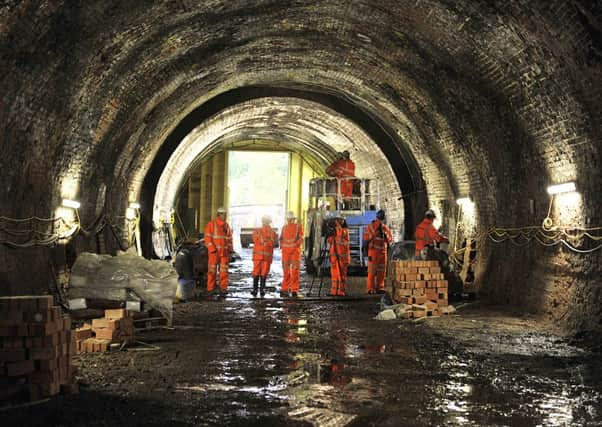Rail right on track for a bright future


They have the potential to make a major contribution towards cutting traffic congestion and contributing towards keeping the nation moving, as part of an integrated transportation system.
SEStran is working with local authorities, the rail industry, Transport Scotland and others to develop potential improvements to rail services in South-east Scotland. We believe that there must be far better access to rail transport, an improved quality of service and significant improvements to overall connectivity.
Advertisement
Hide AdAdvertisement
Hide AdScotland is already benefiting from major improvements in rail services throughout the country. These will provide a step-change in the quality of service that passengers can expect over the next few years. Developments range from an improved quality of service to better access, faster journeys and improved connectivity.
The reopening of the Stirling-Alloa-Kincardine rail link in March 2008, with a new station built for Alloa, has already extended the option of rail travel to thousands of commuters.
Elsewhere in the region, SEStran’s multi-modal study on improvements to transport services through Levenmouth, shows that improvements to the existing track could offer great opportunities for rail freight. Stations at Leven and Cameron Bridge could provide rail passenger services to the area, taking vehicles off the road and reducing congestion, while potentially offering the option of rail travel to thousands of regular commuters and enhancing the employment prospects for Levenmouth residents.
The beginning of the ScotRail franchise process represents a fresh start for rail services in Scotland that should result in significant improvements to existing timetable and the provision of new services.
Options exist within the franchise to establish a new station at Winchburgh and to establish a service from Edinburgh to Berwick upon Tweed, with new stations at East Linton and Reston, This will offer improved commuting and leisure travel opportunities and should stimulate employment prospects. There may also be the possibility of a new semi-fast service to Newcastle.
Meanwhile the development of the Borders Railway will offer improved access to the Capital from the Borders and Midlothian that will enable commuters to leave the car at home and contribute towards reducing congestion on the region’s roads.
Improvements are also underway to the Caledonian sleeper train franchise. Companies competing for the service will introduce improved rolling stock offering a high-quality travel experience, including; en-suite lavatories in business class berths, new wi-fi facilities, and improved security. Bidders have also been asked to provide showers for sleeper passengers at key stations and to consider introducing on-board showers as a premium service.
Cross-border rail services are also being improved. The Transpennine routes are being electrified, which means that an all-electric service will soon be available between Manchester and Scotland.
Advertisement
Hide AdAdvertisement
Hide AdThe Edinburgh to Glasgow Improvements Project (EGIP) offers greater capacity and faster journeys between the two cities. Electrification of the line will make a major contribution to reducing carbon emissions, while the establishment of new stations such as Winchburgh would help further reduce traffic congestion by offering the rail option to commuters.
Improvements to Scottish rail services will continue steadily in the wake of EGIP, with the goal of at least 100km of track being electrified each year, providing a corresponding improvement in quality, speed and sustainability. Eventually all passenger lines in South-east Scotland – and as many as possible throughout the country – will benefit from electrification.
As a key member of the High Speed Rail Scottish Partnership Group, SEStran views HS2 as a development that will transform long-distance rail travel in the UK and make rail travel to London a real alternative to flying in terms of speed and convenience. Reducing rail travel times from Edinburgh and Glasgow to London to three hours or less would make this an achievable objective.
The first stage in developing High Speed Rail for Scotland will be to establish a new high-speed line between Edinburgh and Glasgow, which will ultimately link in with HS2. In the meantime, the new Edinburgh to Glasgow link will provide high speed commuter services, freeing up the existing line to provide improved rail services across Central Scotland and in particular for local travel to Edinburgh and Glasgow.
We are witnessing the transformation of rail travel in Scotland on a scale not seen within living memory. Passengers can expect a better quality service that is faster, more comfortable and with greater capacity. In turn this will contribute towards SEStran’s goal of building a sustainable transportation system, by providing the rail option to more and more people, as well as the potential for shifting freight off-road and onto rail.
This is truly the age of the train.
• Councillor Russell Imrie is chairman of SEStran
SEE ALSO